Recently, the much-anticipated 2024 World Robot Conference (WRC) came to a successful conclusion in Beijing. At this world-class robotics industry event held for the first time in Beijing after embodied intelligence became a hot topic in the tech world at the beginning of the year, a total of 27 humanoid robots made a spectacular appearance and became the focus of attention.
The conference released the Top 10 Trends in Humanoid Robotics Outlook, which provides insight into the future direction of humanoid robotics. In particular, the report emphasizes the importance of embodied intelligence, i.e. the development of high-quality, high-performance intelligent systems capable of responding quickly and accurately in complex and changing environments. To achieve this goal, it is essential to rely on technologically advanced components and materials exclusive to humanoid robots, such as high-precision sensors, to build more stableand high-performance hardware systems.
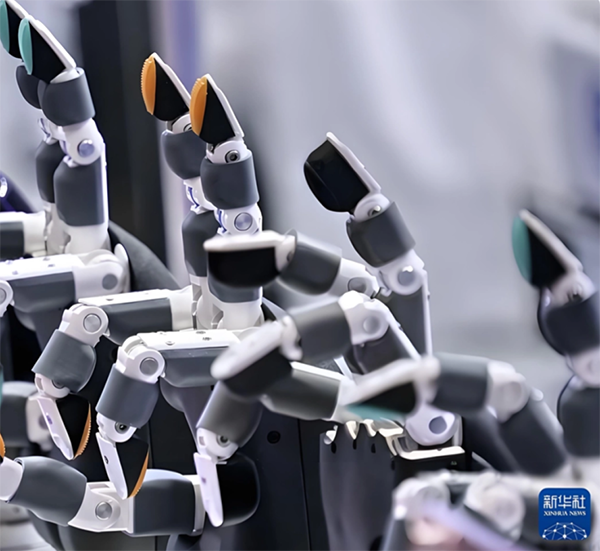
From the report, it is clear that the key to establishing a multimodal macromodel for humanoid robots lies in the fusion of multi-source perception. By integrating multiple sensory data and generating rich multimodal information, the generalization ability of the robot can be effectively enhanced, enabling it to better understand and adapt to various environments.
Looking back at the development of perception technology, sensor technology is currently moving rapidly towards digitalisation, intelligence, miniaturization, integration, energy saving and high precision. In this process, MEMS and FMT is particularly critical, they provide a strong technical support for the further iteration and upgrade of the sensor.
MEMS
MEMS technology, or Micro-Electro-Mechanical Systems, is a highly integrated micron-sized micro-system.Fabrication techniques for MEMS devices include surface micromachining, body micromachining, LIGA technology, etc., which allow the fabrication of complex three-dimensional structures on silicon wafers.The advantages of MEMS technology lies in its small size, low weight, low power consumption, high integration and cost effectiveness.
MEMS ultrasonic sensor
MEMS ultrasonic sensors are a new generation of ultrasonic sensors that integrate piezoelectric thin film as a functional film with silicon-based MEMS (microelectromechanical). Manufactured by wafer-level MEMS micro-nano process, the single chip has both ultrasonic transmitter (Tx) and receiver (Rx) multiplexing functions.
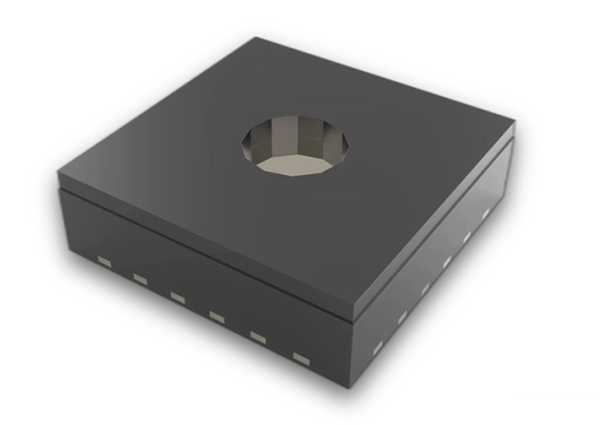
Using a MEMS ultrasonic sensor solution to complement a robotic vision system's lack of distance perception may be more cost-effective than other technology solutions, with advantages such as wider sensing range, smaller size, and concealed mounting.
Wide detection range with 180° FOV
MEMS ultrasonic sensors have a field of view of up to 180° and a wide detection range. With one sensor installed at the front and one at the back of the robot, a 360° field of view can be achieved, which is sufficient to meet the sensing needs of daily collaboration.
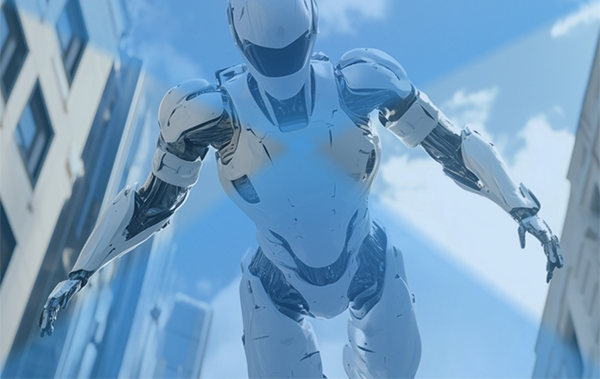
Millimetre size, small footprint
Thanks to the MEMS manufacturing technology on the sensor surface micromachining, body micromachining, etc. under the auspices of the MEMS ultrasonic sensor size of 4.2 * 4.2 * 1.5mm, the volume is much smaller than other conventional sensors.
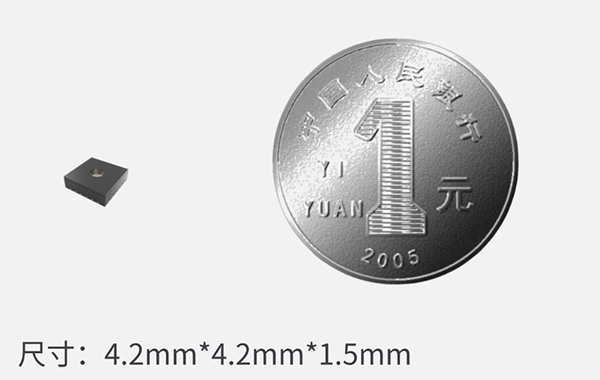
Concealed installation
In practical applications, MEMS ultrasonic sensors can be installed in a hidden way, through clever design to achieve the effect of the naked eye can not be detected, so as not to affect the appearance of the whole machine design, to maintain the integrity of the robot appearance design and aesthetics.
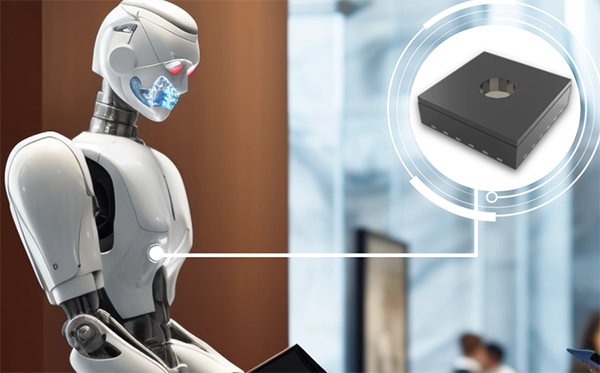
FMT
The application of Flexible Manufacturing Technology (FMT) in robotics manufacturing refers to the ability to achieve high dynamic performance through the use of flexible materials that enable the arbitrary bending, folding or stretching of key parts of a robot's components without causing damage. The development of flexible technology also opens up new possibilities for wearable devices, electronic health monitoring, smart textiles and more.
Flexible pressure sensor
The advanced nano-interface capacitance principle of the ionization type flexible sensor, can quickly and accurately detect the pressure acting on the product surface. It is sensitive, accurate, fast, stable, small in size and easy to install and use. Especially suitable for robotics applications to detect the force on the gripper.

An integrated array of multiple flexible pressure sensors can be used as a robot's electronic skin. The sensors convert pressure signals into electrical signals through a data acquisition and signal processing unit, thereby detecting small pressure changes in real time and realizing the pressure-sensing function of ‘human-grade’ skin.
Intelligent integration and support for secondary development
The sensor is equipped with a collector module that follows an open communication protocol, which not only recognizes the type and state of the grasped item, monitors the drop, but also detects the strength of the force applied. The module supports secondary development, allowing users to customize and optimize it according to specific application scenarios to extend its functionality and adaptability.

Flexible technology for different surfaces
Flexible pressure sensors are made of flexible materials with a bendable substrate, and the multi-array type can also be bendable, foldable, and stretchable, which can be adapted to different surface shapes, enabling them to be used on irregular or curved object surfaces.
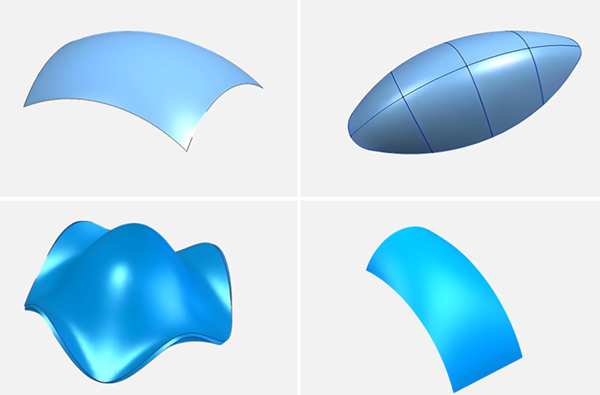
Compact size, multi-array arrangement for multiple functions
The size of the product is 3*2*0.3mm, the weight is less than 1g, extremely thin and light, which is conducive to different array arrangement to achieve different functional applications, such as pressure mapping, haptic feedback, electronic skin, flexible displays, etc., in the array of sensors can provide a higher dimension of detection and data analysis capabilities.
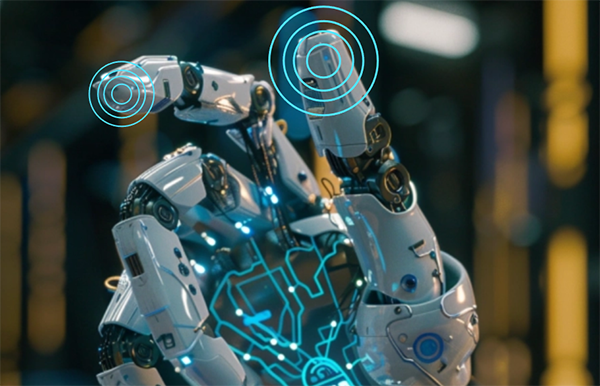
In practice, flexible pressure sensor arrays such as being folded into a more compact form, easier to carry and store; stretchable so that even if the sensor is subjected to a certain degree of deformation will not be damaged, helping future robots to achieve the ‘superhuman ability’ of the high dynamic performance of the application.
With the development of technology, the industry's leading sensor companies have begun to research and development of ‘MEMS + FMT’ two advanced technologies combined sensors, we look forward to more and better sensor products.













 Focus on us
Focus on us